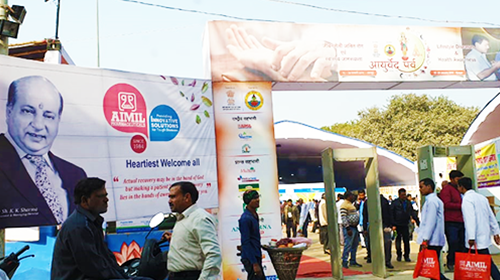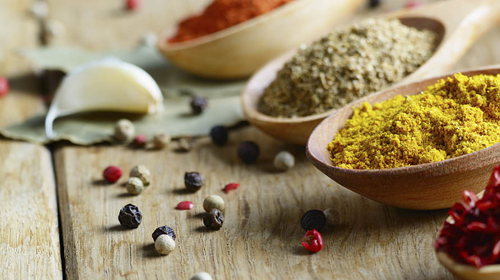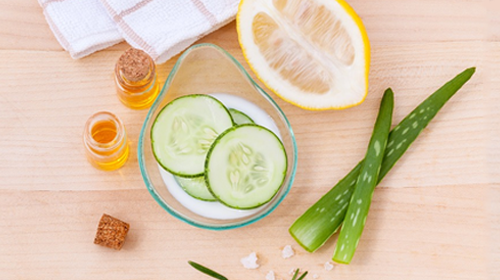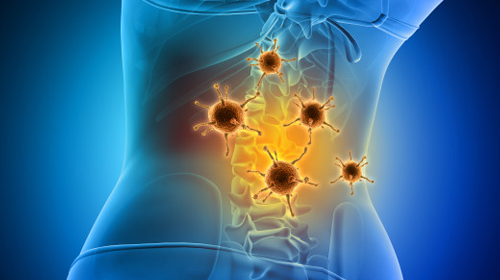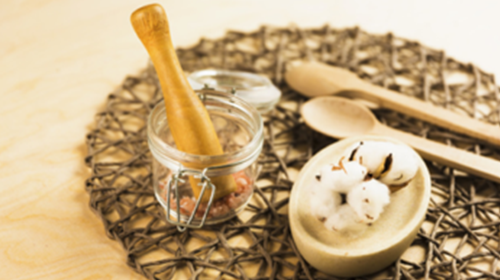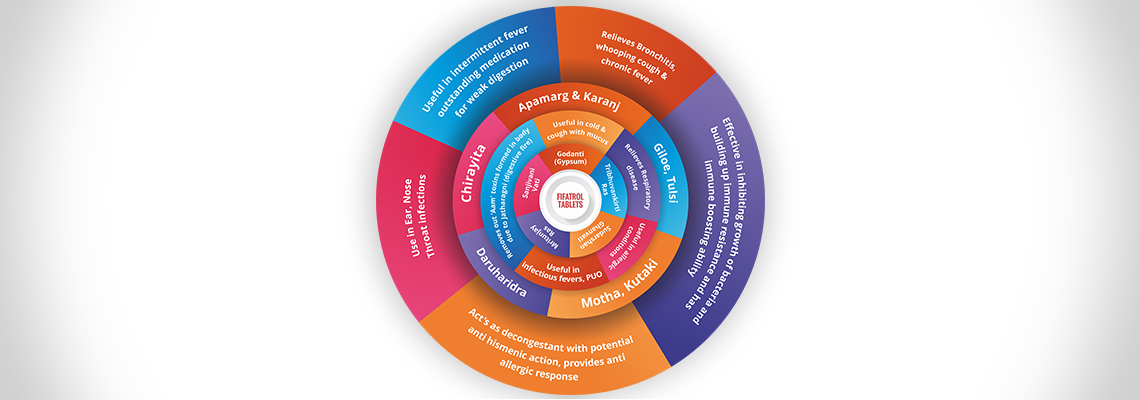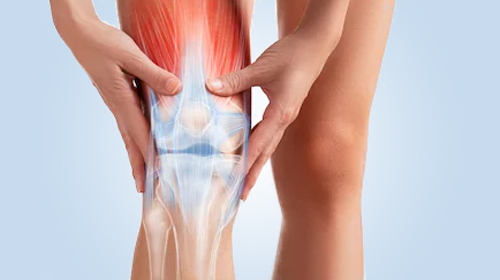Herbs Benefiting Upper Respiratory Tract Infections
Upper respiratory tract infections (URTI) are illnesses caused by an acute infection which involves the upper respiratory tract including the nose, sinuses, pharynx or larynx. This commonly includes nasal obstruction, sore throat, tonsillitis, pharyngitis, laryngitis, sinusitis, otitis media, and the common cold. Most infections are viral in nature and in other instances the cause is bacterial. Upper respiratory tract infections can also be fungal or helminth in origin, but these are far less common.
Treatment
Respiratory tract infections continue to be a major health challenge worldwide especially due to the increasingly fast development of resistance to the drugs currently in use. Therefore, a Comprehensive Herbal formula in the form of “JUFEX” and “JUFEX FORTE” for the Management of Upper Respiratory Tract Infections has been developed. It is a special formula for all ages, to treat infections of respiratory tract, recurrent sore throat, childhood bronchitis, congestion, cough etc. It cures the causative factors and simultaneously boosts the body defence system so as to strengthen the body to fight against allergies, infections and the other climatic change problems.
Jufex relives allergic cough as it provides gentle anti-histaminic action without sedation, and protects against allergen induced chest congestion. It increases Immune building efficiency thus improves body's natural response to the pathogens by enhancing the immune system production of antibodies. Jufex brings progressive improvement in symptoms such as cough, breathlessness and sputum. Improves ventilation in respiratory airways and relieves chest congestion.
The major Herbs used as an active ingredients of Jufex are:
JUFA (Hyssopus officinalis L.) : Jufa has been used for centuries in herbal medicines for the treatment of sore throats, colds, hoarseness, and as an expectorant and has beneficial effects for asthma. It is antispasmodic, so it relieves spasms in the respiratory system and soothes coughs. It is also an expectorant and it loosens phlegm that has been deposited in the respiratory tracts. This property helps heal infections from the common cold, and it helps treat respiratory conditions and serving as a natural remedy for bronchitis. Jufa’s antispasmodic and antiseptic properties make it a great natural treatment for coughs and other respiratory conditions.
BHARANGI (Clerodendrum serratum (L.) Moon): Bharangi is one of the common herbs used in the treatment of common cold, chronic sinusitis, allergic rhinitis, cough and other chronic respiratory problems and also used for relief from fever and hyper-pyrexia. Therapeutic potential of roots and leaves of Bharangi has been demonstrated in the conditions like asthma, allergy, fever, inflammation and liver disorders attributed to the presence of various flavonoids, phenolics and saponins present in the drug. It has reported anti-oxidant, anti-microbial, anti-asthmatic, and anti-tumour activities.
VASAKA (Justicia adhatoda L. syn. Adhatoda vasica Nees): Vasaka is a well-known as an expectorant Ayurvedic medicine to ease out the phlegm. All parts of the plant are used to treat many ailments, however, leaves are of great importance. The plant is effective in treating asthma, bronchitis, tuberculosis and other disorders. It is used as expectorant, antispasmodic, anthelmintic, antiseptic and bronchodilator. It softens the thick sputum, facilitates it’s coming out and thus brings about quick relief in bronchitis. Thus, vasaka is an effective herb in the management of respiratory congestions like cough, bronchitis, asthma.
KANTAKARI (Solanum virginianum L. Syn. Solanum xanthocarpum Schrad. & H. Wendl., Solanum surattense Burm. f.): Kantakari has been used in Ayurveda for a variety of therapeutic purposes in various ailments since ancient time. Kantakari is widely used to treat respiratory diseases in Ayurveda. The entire plant has medicinal values in various ways. It is very useful for removing the mucus from the chest and thus promoting good comfortable breathing and reduces asthma, cough and cold. The plant is bitter, acrid, hot, antibacterial. anti-asthmatic, anti-inflammatory, anti-tussive, expectorant, antipyretic, anthelmintic, anodyne, digestive, carminative, appetizer, stomachic, depurative, sudorific, febrifuge, laxative, stimulant, diuretic, rejuvenating, emmenagogue and aphrodisiac activities.
ANJEER (Ficus carica L.) : Anjeer is a great source of fibre and full of vitamins and minerals, known for being a healthy and versatile ingredient. Anjeer fruits are high in natural sugars, minerals and soluble fibre and a rich in minerals including potassium, calcium, magnesium, iron and copper and are a good source of antioxidant vitamins A, E and K that contribute to health and wellness. Historically, figs have been used to treat numerous ailments, including common digestive issues such as poor appetite, colic, indigestion, constipation, dysentery, inflamed or ulcerated intestines, and intestinal parasites. They also provide relief from sore throats, coughs, antispasmodic, antibacterial, anti-inflammatory, and natural laxative effects. In Addition of these Anjeer fruits are used including the improvement of vision, alleviation of asthma, treatment of cardiovascular disorders and certain cancers (e.g., colon and lung) and maintenance of blood sugar levels. The natural chemicals in Anjeer make them an ideal component to prevent and lessen the symptoms of asthma. The high mucilage content in Anjeer helps to heal and protect sore throats. The soothing nature of figs and their natural juices can relieve pain and stress on the vocal chords. Figs are quite useful in treating various respiratory disorders like whooping cough and asthma.
BANAFSHA (Viola odorata L.): Banafsha is used in medicine for treating respiratory ailments, bronchitis, whooping cough, fever, throat infection, skin conditions, cystitis and rheumatism due to its anti-inflammatory, diaphoretic, emollient, expectorant, antipyretic, diuretic and laxative properties. Banafsha is a rich source of sodium, calcium, magnesium, aluminum, silicon, chloride and iron. It contains different types of chemical constituents including flavonoid, glycosides, alkaloids, steroids, terpenes, saponins and tannins. The mucilage and saponins are soothing expectorants that help relieve coughs and other bronchial ailments. It is reported to cleanse blood, liver, kidney and lungs; loosens the phlegm; gives relief in congestion of lungs, cold, cough, difficult breathing, fever, bronchitis and other cough related respiratory ailments; helps in sore throat and swollen glands, and reduces nervous tension, stress and insomnia.
HANSRAJ (Adiantum lunulatum Burm. f.): In traditional medicines Hansraj has been reported to be used for cleansing respiratory system, dyspnea, asthma, coryza and chest pain in the field of respiratory system. Hansraj exhibited to possess anti-diabetic, anticonvulsant, analgesic, hypocholesterolemic, goitrogenic, anti-thyroidal, antibacterial, antifungal, wound healing, antiobesity, anti hair loss, anti-asthmatic, anti-inflammatory, antidiarrheal and antispasmodic, antioxidant as well as diuretic, anti-urolithiatic and detoxifying effects in modern medicine due to the presence of different chemical constituents such as tannins, terpenoids, flavonoids, alkaloids, and steroids.
MULETHI (Glycyrrhiza glabra L): Mulethi is used to treat a wide array of illnesses including healing respiratory tract disorders, boosting immunity levels and lowering cholesterol levels. Roots of the Mulethi have been used for centuries for its medicinal benefit. Ayurveda considers Mulethi to be a tonic, expectorant and a demulcent. A demulcent has soothing and coating properties, while an expectorant eliminates phlegm and mucous from the respiratory tract. In the respiratory system, its soothing and healing action reduces irritation and inflammation. Its anti-allergic property is useful in allergic rhinitis, and bronchial asthma. These properties account for the traditional use of Mulethi as a cough reliever and an asthma treatment. The principal constituent of Mulethi to which it owes its characteristic sweet taste is glycyrrhizin.
TULSI (Ocimum tenuiflorum L., syn. Ocimum sanctum L.): Indian mythology attaches a great significance to Tulsi by recognizing it as a holy herb. Perhaps, such significance comes from the actual health applications of the herb. It is recommended as first aid in the treatment of respiratory, digestive and skin diseases. It can cure various respiratory disorders like bronchitis & tuberculosis. Traditional indications for the herb include common colds, bronchitis, diarrhea, stomach disorders, headaches, inflammation, arthritis, heart disease, skin diseases, eye diseases, various forms of poisoning, insect bites, and malaria.
SUNTHI (Zingiber officinale Roscoe): Sunthi or Ginger has been used across the globe as a natural remedy for thousands of years due to its medicinal properties. The health benefits of Ginger are largely due to its antioxidants, and anti-inflammatory properties and content of therapeutic compounds like gingerol, shogaol, paradol and zingerone. Ginger helps improve the immune system. Ginger is one of the oldest cures for common cold, nausea and flu as it has anti-viral and anti-fungal properties. It cures cold and provides instant relief and also kills the bacteria that causes cold and ensures that it doesn’t return. Sunthi eases sore throat, non-stop coughing and even congestion. Sunthi contains chromium, magnesium and zinc which can help prevent chills, fever, and excessive sweat. It also acts as an antihistamine and hence is useful in dealing with allergies.
GILOE (Tinospora cordifolia (Thunb.) Miers): Giloe also called as “Guduchi” is known for its immense application in the treatment of various diseases in the traditional Ayurvedic system.. Recently the discovery of active components from the plant and their biological function in disease control has led to active interest in the plant across the globe. Giloe is used for allergic rhinitis (hay fever), diabetes, high cholesterol, upset stomach, gout, lymphoma and other cancers, rheumatoid arthritis, hepatitis, peptic ulcer disease, fever, gonorrhea, syphilis, and to boost the immune system. A variety of active components derived from the plant like alkaloids, steroids, diterpenoid lactones, aliphatics, and glycosides have been isolated from the different parts of the plant. These compounds are responsible for anti-diabetic , anti-periodic, anti-spasmodic, anti-inflammatory, anti-arthritic, anti-oxidant, anti-allergic, anti-stress, anti-leprotic, anti-malarial, hepatoprotective, immunomodulatory and anti-neoplastic activities.
BAHEDA (Terminalia bellirica (Gaertn.) Roxb.): Baheda is used to protect the liver and to treat respiratory conditions, including respiratory tract infections, cough, and sore throat. The Baheda fruit contains tannin, beta-sitosterol, galic acid, chebulasic acid, mannitol, glucose, galactose, fructose and ramnose . These aids in asthma and breathing problems.
APAMARG (Achyranthes aspera L.): Apamarga has been extensively used in Ayurveda as an anti-inflammatory agent besides being useful in cough , cold, Hemorrhoids, indigestion, asthma, anemia, jaundice and snake bite. The chemical constituents like saponin, oleanic acid, achyranthine , ecdysterone, alkaloids, flavonoids, steroids and terpenoids are present in different parts of Apamarga that possesses pharmacological activities like antibacterial, antifungal, antipyretic, diuretic, purgative, laxative, antiasthmatic, hepatoprotective, anti-inflammatory, antioxidant, immunomodulatory, broncho-protective, and anti-allergic activity.
KAKRA SINGHI (Pistacia integerrima J.L.Stewart ex Brandis): Kakra Singhi is used in Ayurveda in treatment of cough , asthma, bronchitis, phthisis, catarrhal fever, enlarged glands and externally on obstinate skin diseases, bleeding gums, epistaxis, leucorrhea, and other mucous discharges. The major constituents of Kakrasinghi are the tetracyclic triterpenes, pistacigerrimones A, B and C, that relieve inflammation, promotes the secretion of sputum by the air passages, and used to treat coughs, and prevent asthma attacks.
PIPERMINT (Mentha × piperita L.): Peppermint is used for the common cold, cough, inflammation of the mouth and throat, sinus infections, and respiratory infections. The active chemical components of peppermint oil are menthol, menthone, menthyl acetate, 1,8-cineole, limonene, beta-pinene, and beta-caryophyllene. Menthol, the main chemical component of peppermint, is an effective decongestant. Decongestants shrink the swollen membranes in the nose, making it easier to breathe. Menthol is also an expectorant helps in loosen and bring up mucus from the lungs. A preclinical study found that extracts of the leaves of peppermint inhibit histamine release indicating it may be clinically effective in alleviating the nasal symptoms of allergic rhinitis. In vitro, peppermint has significant antimicrobial and antiviral activities, strong antioxidant and antitumor actions, and some antiallergenic potential. Peppermint supports lung health and respiratory function. Peppermint acts as an expectorant, helping to open airways, clear mucus and reduce congestion, and is one of the best essential oils for colds, the flu, cough, sinusitis, asthma, bronchitis and other respiratory conditions.
SHEETAL CHINI (Piper cubeba L.f.): Sheetal Chini helps relieve the symptoms of asthma and many other respiratory conditions. The fruits have carminative, expectorant, stimulant, stomachic, irritant, sedative, anti-dysenteric, and antiseptic properties and useful in treatment of cold, cough, bronchitis, and respiratory infections.
PIPPALI (Piper longum L.): Pippali fruit has been used in traditional medicines to treat cough, chronic bronchitis, asthma, respiratory infections, constipation, gonorrhoea, diarrhea, cholera, chronic malaria, viral hepatitis, stomach-ache, diseases of the spleen, and tumors. Pippali is most renowned for its effectiveness against conditions affecting respiratory tract, like colds, coughs, bronchitis, and asthma. It serves as a counter-irritant and eases inflammation. It is even used in treating bronchial asthma in children. Pippali not only helps fight infections by virtue of its antibacterial properties but also works locally to help thin phlegm and ease congestion. Pippali can also help those suffering from asthma, helping reduce not only the intensity of an attack but even the frequency of occurrence.
KALI MIRCH (Piper nigrum L): Kali Mirch also known as Black pepper contain an impressive list of plant derived chemical compounds that are known to have disease preventing and health promoting properties. Kali Mirch have been in use since centuries for their anti-inflammatory, carminative, and anti-flatulent properties. Kali Mirch composed of health benefiting essential oils such as piperine, an amine alkaloid, which gives strong spicy pungent character. These compounds help the body remove harmful free radicals and help protect from cancers and other diseases.
PUSHKARMOOL (Inula racemosa Hook,f.): Traditionally Pushkaramul has been used to treat respiratory and cardiovascular problems as well as for weight loss. Other conditions treated traditionally with Pushkaramula include: bacterial infections, blood sugar metabolism problems, asthma, bronchitis, cough, and heart disease. Pushkarmool roots are widely used in indigenous medicine as an expectorant. It is used for lung diseases including asthma, bronchitis, and whooping cough. It is also used to prevent coughing, especially coughing caused by tuberculosis; and as an expectorant to help loosen phlegm, so it can be coughed up more easily.
DAL CHINI (Cinnamomum verum J.Presl syn. Cinnamomum zeylanicum Blume): Dal Chini is a powerful spices that has been used medicinally around the world for thousands of years. This bark contains several special compounds which are responsible for its many health-promoting properties, including cinnamaldehyde, cinnamic acid and cinnamate. These compounds make cinnamon one of the most beneficial spices on earth, giving it antioxidant, anti-inflammatory, anti-diabetic, anti-microbial, immunity-boosting and potential cancer and heart disease-protecting abilities. Dal Chini contains natural antimicrobial, antibiotic, antifungal and antiviral properties and its essential oils contain powerful immune-boosting compounds as well. Cinnamon oil, in particular, can also protect against bacterial infections, which can cause conditions like the common cold, flu, strep throat and pneumonia.
TEJPATRA (Cinnamomum tamala (Buch.-Ham.) T.Nees & C.H.Eberm): Tejpatra has been used medicinally since ancient times and was a major medicinal plant in medieval times. Tejpatra is used for many conditions such as cough and cold, diabetes, arthritis, heart and liver health. The leaves yield an essential oil, which contains eugenol and phellandrene, a-pinene, camphene, myrcene, limonene, p-cymene, etc. The leaves are also exceptionally rich in many vitamins and minerals. Leaves are analgesic, astringent, carminative, digestive, stomachic, emetic, diuretic, anti-inflammatory, anti-oxidant, antibacterial and anti-fungal. The leaves are used for treating coughs, colds, excess mucus, allergy and other respiratory problems.
TALISH PATR (Abies spectabilis (D.Don) Spach, syn. Abies webbiana (Wall ex D. Don) Lindl.): Talispatra helps in almost all respiratory diseases. Leaves have anti-inflammatory and bronchodilatory action on airways and lungs and are used in diseases such as common cold, sneezing, and allergic rhinitis cough, asthma, chronic bronchitis. Leaves also work as antibacterial, antiviral, antimicrobial, mucolytic, antitussive, expectorant, anxiolytic, and antispasmodic, so they are effective in infections of upper respiratory tract.
UNNAB (Ziziphus jujuba Mill. Syn. Ziziphus sativa Gaertn.): Unnab helps to alleviate asthma and other lung disorders, reduce inflammation, fight obesity, stimulate the immune system, improve gastrointestinal health, and boost antioxidant capacity. Unnab fruit contains the active compounds such as flavonoids and triterpenoids that act like antioxidants and reduce swelling (inflammation). It also contains many essential vitamins and minerals necessary for healthy cells. It is rich in vitamin C, which supports immune function and prevents infections by increasing the production of beneficial inflammatory cytokines. The fruit extract has antibacterial activity against harmful Gram-positive and Gram-negative pathogenic bacteria.
HARAD (Terminalia chebula Retz.): Harad is called the "king of medicines" and is one of the prime Ayurvedic herbs because of its extraordinary healing powers. The fruit is a good source of vitamin C and the minerals like selenium, potassium, manganese, iron and copper, and is also considered to have antibacterial and anti-inflammatory properties.
KULANJAN (Alpinia galanga (L.) Willd.): Kulanjan rhizome has been widely used as a herbal medicine since ages. It is very similar to the health benefits of ginger. It is a good source of fibre, and rich in iron, sodium, Vitamin A, C, flavonoids, phytonutrients, emodin, beta-sitosterol, quercetin, galangol, galangin, gingerol, camphor, and eugenol. It exhibits Anti-oxidant, Anti-inflammatory, Anti-bacterial, Anti-fungal, and Anti-viral activities. It has been used for respiratory ailments including asthma, bronchitis, cough and sore throat.
KHUBAJI (Malva sylvestris L.): Some of the most impressive health benefits of Khubaji includes its ability to speed wound healing, protect against infection, reduce inflammation, reduce signs of aging, improve respiratory health, optimize digestive functions, improve sleep, and treat headaches. It is rich in Vitamins A,B,C,E; inulin; mucilage; phenols; flavonoids; essential fatty acids; fibre; calcium; magnesium; zinc; selenium; potassium. Khubaji fruits boost the immune system by preventing bacterial infections and other foreign agents, reduces inflammation and swelling. It is used in respiratory ailments by increasing expectoration activity which can clear out the respiratory tracts, and also soothes the throat and glands due to its anti-inflammatory aspects. Due to its high mucilage content, it makes excellent soothing demulcent herbs, especially for cases of inflammation, either for the urinary, digestive or respiratory systems. Khubaji is useful for fighting both dry coughs and chest colds because of the gelatinous quality of the fruits.
KHATMI (Althaea officinalis L): The antitussive and mucilage properties of Khatmi decrease throat irritation and reduce swelling of the lymph nodes. This can help relieve cough and cold and other respiratory ailments, including a sore throat. Because of the high amounts of vitamin C it clear mucus anywhere in the body, with more concentrated effects on the mucus in the lungs and boost body immunity. It also contains chemicals that might decrease cough and help heal wounds by decreasing inflammation and fighting certain "bugs".(microbes).
AMLA (Phyllanthus emblica L): Amla is highly nutritious and could be an important dietary source of vitamin C, amino acids, minerals, phenolic compounds, tannins, phyllembelic acid, phyllembelin, rutin, curcum-inoids, and emblicol. The fruit has been used in Ayurveda as a potent rasayana for the treatment of diarrhea, jaundice, and inflammation. It shows antidiabetic, hypolipidemic, antibacterial, antioxidant, antiulcerogenic, hepatoprotective, gastroprotective, and chemopreventive properties. It helps to eradicate the problems of cough cold and asthma.
KAIPHAL (Myrica esculenta Buch.-Ham. ex D.Don syn. myrica nagi Hook. f.): Kaiphal is known traditionally in Ayurveda to possess anti-asthmatic activity. Recent scientific study showed that stem bark of Kaiphal possessed antiallergic and anti-inflammatory activity and may be useful in the treatment of allergic disorders such as allergic asthma and allergic rhinitis by decreasing bronchial hyper-responsiveness.



